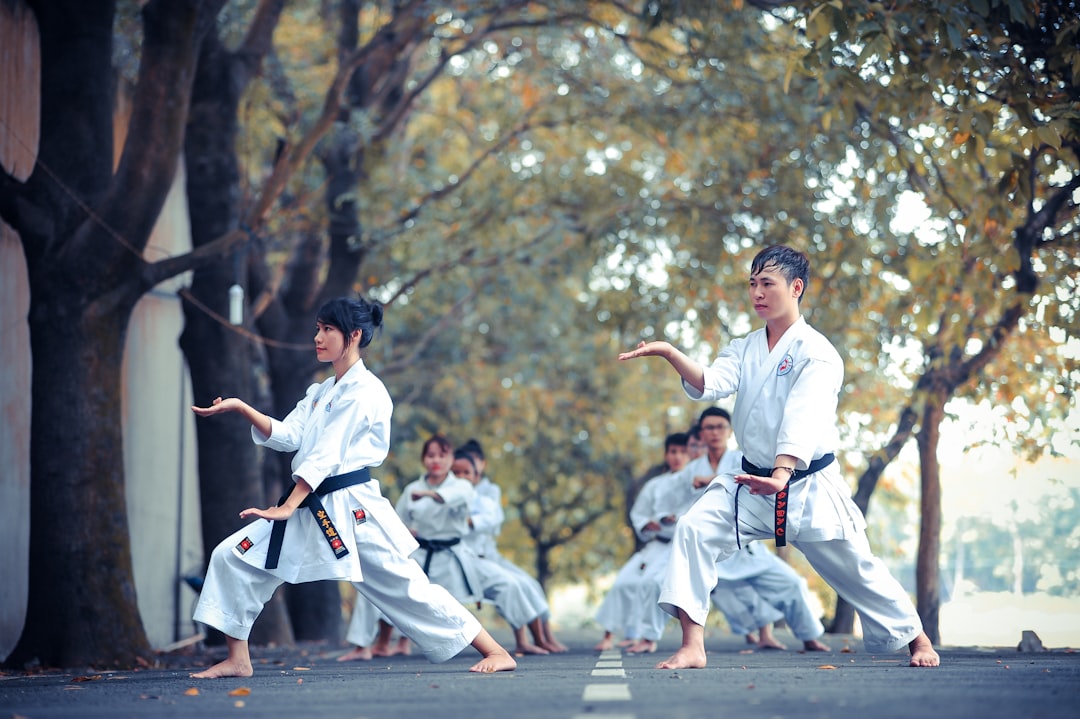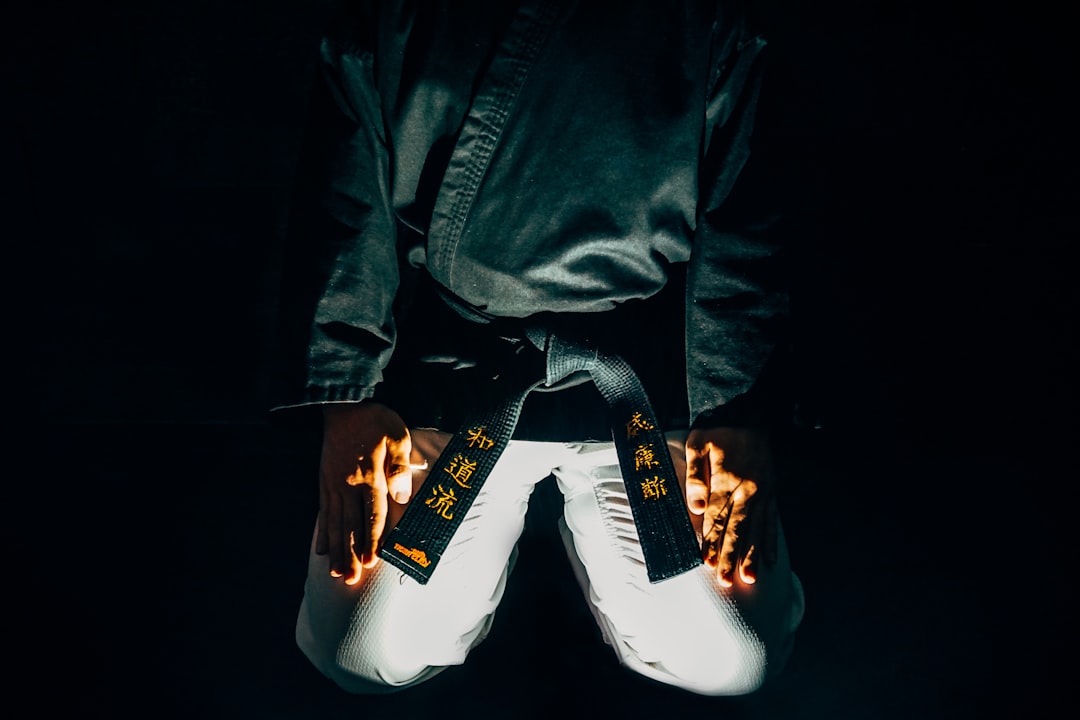The karate uniform, known as a keikogi or gi, is central to the practice of karate, serving not only as a symbol of respect for tradition but also as a functional piece that supports mobility and embodies discipline's core values. The traditional white cotton or hemp gi, consisting of a jacket, trousers, and an obi belt, reflects the martial art's heritage while promoting unity and equality within the dojo. The color white symbolizes purity and cleanliness, reinforcing the mental and physical discipline intrinsic to karate. Practitioners should choose a gi that adheres to the standards of their style's governing body and suits individual needs. Safety is paramount in karate practice, with protective gear such as hand pads, shin guards, groin protectors, and headgear being essential during impact-based drills like sparring. Advanced practitioners also utilize specialized equipment like focus mitts, kick shields, target pads, and electronic strike counters to refine their techniques and track progress. A well-selected karate uniform and appropriate gear are crucial for effective participation and personal growth in the art of karate.
Karate practitioners, from novices to black belt holders, engage with a diverse array of equipment that shapes their training and practice. This article delves into the fundamental tools required for authentic karate experience, starting with the iconic karate uniform known as “keikogi,” which is pivotal in maintaining proper form and discipline. We’ll explore the significance of different colored belts, essential protective gear for safety, and specialized training tools that cater to both beginner and advanced martial artists. Join us as we examine each aspect of karate equipment that contributes to the mastery of this esteemed art.
- Understanding the Essentials: The Karate Uniform and Its Significance
- Gearing Up for Practice: Types of Karate Belts and Their Ranking
- Essential Protective Gear for Karate Practitioners
- Mastering the Art: Key Karate Training Tools and Equipment
- Advanced Karate Training: Specialized Gadgets and Accessories for Serious Karateka
Understanding the Essentials: The Karate Uniform and Its Significance

When practicing karate, the practitioner’s attire is as significant as their technique; it’s about more than just comfort—it’s a matter of respect and tradition. The karate uniform, commonly known as a gi, serves as a symbolic representation of the discipline’s origins and values. Made of sturdy cotton or hemp fabric, the gi is designed to provide mobility while withstanding the rigors of martial arts training. It typically consists of a jacket, trousers, and a belt, known as an obi, which secures at the waist. The top, or “uyedama,” reaches just above the knee, and its sleeves are either short or long depending on the style of karate being practiced. The trousers, called “rekutsu,” extend to just below the knees, offering both flexibility and modesty.
Why is the karate uniform, specifically the gi, so significant? Firstly, the white color reflects the idea of purity and cleanliness, a reminder for practitioners to maintain both their bodies and minds. Secondly, the uniformity of the gi among all students signifies unity and equality within the dojo. It’s not just about the style or cut; it’s about honoring the traditions that have been passed down through generations. The choice of fabric is also deliberate—heavy enough to allow for the observation of the movements by instructors, yet breathable and comfortable for sustained periods of training. When selecting a karate uniform, one should consider the guidelines set forth by their style’s governing body, ensuring that the gi adheres to the traditional standards while also meeting their personal needs.
Gearing Up for Practice: Types of Karate Belts and Their Ranking

When gearing up for a karate practice, the choice of attire and equipment is crucial to ensure comfort, functionality, and respect for the discipline. One of the most iconic pieces of karate gear is the karate uniform, commonly known as a gi. This traditional garment consists of a jacket, trousers, and belt, each serving a purpose that aligns with the principles of karate. The karate gi not only facilitates the practitioner’s range of motion but also signifies their rank within the martial art.
Karate belts, in particular, are a mark of a practitioner’s progress and skill level. They come in various colors, each with its own significance. Beginners typically start with a white belt, which symbolizes purity and innocence. As practitioners advance through the different belt levels—white, yellow, orange, green, blue, brown, and finally black—they are not only mastering techniques but also demonstrating discipline, strength, and resilience. The journey from one belt to the next is a testament to dedication and continuous improvement in karate, making the choice of belt a reflection of one’s commitment to the martial art.
Essential Protective Gear for Karate Practitioners

When practicing karate, protective gear is crucial to ensure the safety and well-being of practitioners. A fundamental piece of equipment is the karate uniform, also known as a gi, which not only facilitates movement during practice but also adheres to traditional martial arts attire standards. The gi typically consists of a jacket, pants, and a belt, with the latter serving both functional and ceremonial purposes. Are the protective measures in karate limited to just the uniform? Certainly not. In addition to the gi, protective gear such as hand pads, shin guards, and groin protectors are essential for beginners and advanced practitioners alike, especially when engaging in sparring or kumite drills. These items safeguard sensitive body parts from injury during impact training or competitive bouts, making them indispensable on the karate mat. Hand pads are designed to cushion the fists and prevent bone fractures, while shin guards protect the legs against kicks and thrusts. The groin protector offers crucial support and protection during techniques that might otherwise result in injury. These protective elements are integral to a safe and effective training environment for all karateka, regardless of their skill level or experience.
Mastering the Art: Key Karate Training Tools and Equipment

When it comes to mastering the art of karate, having the right equipment is essential for both beginners and seasoned practitioners. A fundamental piece of gear is the karate uniform, also known as a gi. The gi not only signifies respect for the martial art but also ensures that the practitioner has the freedom of movement necessary for executing various techniques effectively. Made of cotton or hemp, it comes in traditional white and typically consists of a jacket, trousers, and belt, which is where the rank is denoted. What distinguishes a karate gi from other martial arts uniforms is its lightweight and breathable fabric that allows for flexibility and comfort during rigorous training sessions.
In addition to the gi, protective gear plays a crucial role in ensuring safety while practicing. Padding is used on various parts of the body, including the hands (hand protectors), feet (foot protectors), and headgear to prevent injuries from kicks and punches. These protective items are particularly important when sparring or engaging in combat training, as they help to simulate real-life scenarios without causing harm. Pads for focus mitts and kicking shields are also used during training to refine punching and kicking techniques, respectively. Choosing the right equipment can significantly enhance a karateka’s performance and protect their well-being. Are the protective gear and training tools available at your local dojo or martial arts store? Typically, they offer everything you need to start your karate journey safely and effectively.
Advanced Karate Training: Specialized Gadgets and Accessories for Serious Karateka

When delving into advanced karate training, the equipment and accessories used by serious karateka, or practitioners, play a pivotal role in their development and performance. A karate uniform, specifically designed for optimal movement and comfort, is an essential component. These uniforms, known as keikogi, are tailored to cater to the needs of the practitioner, allowing for unhindered execution of techniques while providing the necessary protection during practice and sparring. The right uniform not only supports the body but also helps in understanding the correct body alignment and positions integral to karate.
Beyond the fundamental uniform, specialized gadgets and accessories enhance the training experience for those who aim to push their limits. Mitts, focus pads, and kick shields are critical for safe sparring and drills, protecting both the practitioner and their partner. Additionally, target pads designed to withstand kicks and strikes are indispensable for honing accuracy and power. For precision training, electronic strike counters can track progress, offering quantifiable data on performance. These advanced tools are instrumental in the relentless pursuit of mastery in karate, enabling practitioners to fine-tune their skills and achieve peak performance.
In concluding our exploration of karate’s equipment landscape, it is evident that the practice of this martial art requires a specific array of gear tailored to the practitioner’s level and intent. From the foundational white karate uniform—a symbol of modesty and humility—to the diverse belt colors signifying rank and progress, each item serves a purpose in enhancing the practitioner’s experience and training effectiveness. Protective gear such as gum shields and hand protectors are indispensable for safeguarding one’s well-being during practice and sparring. Advanced karateka will find specialized tools and accessories, like focus pads and target dummies, invaluable in refining their techniques and achieving mastery. Whether starting out or honing advanced skills, the right equipment is integral to the journey of a martial artist in the world of karate.
